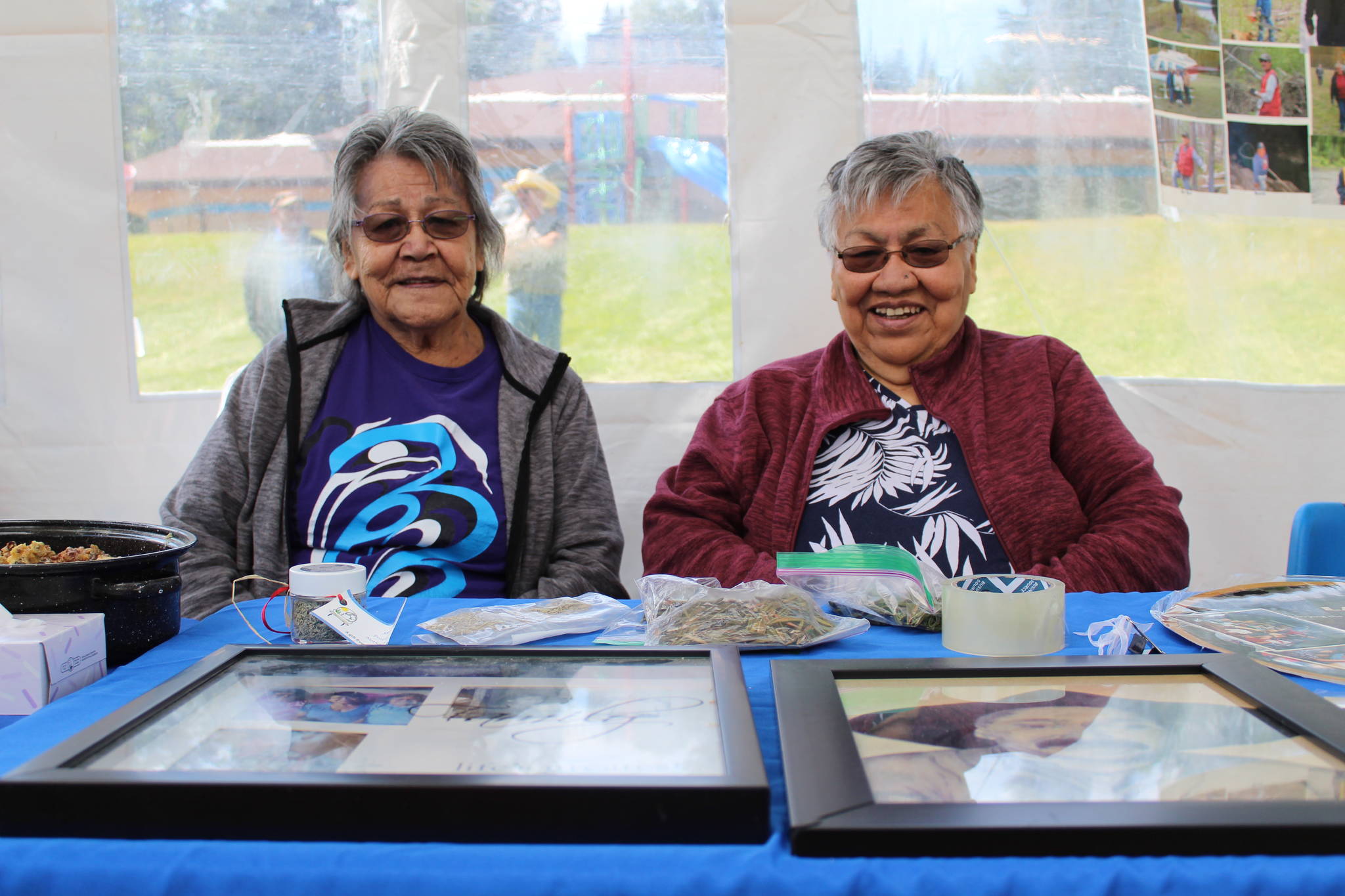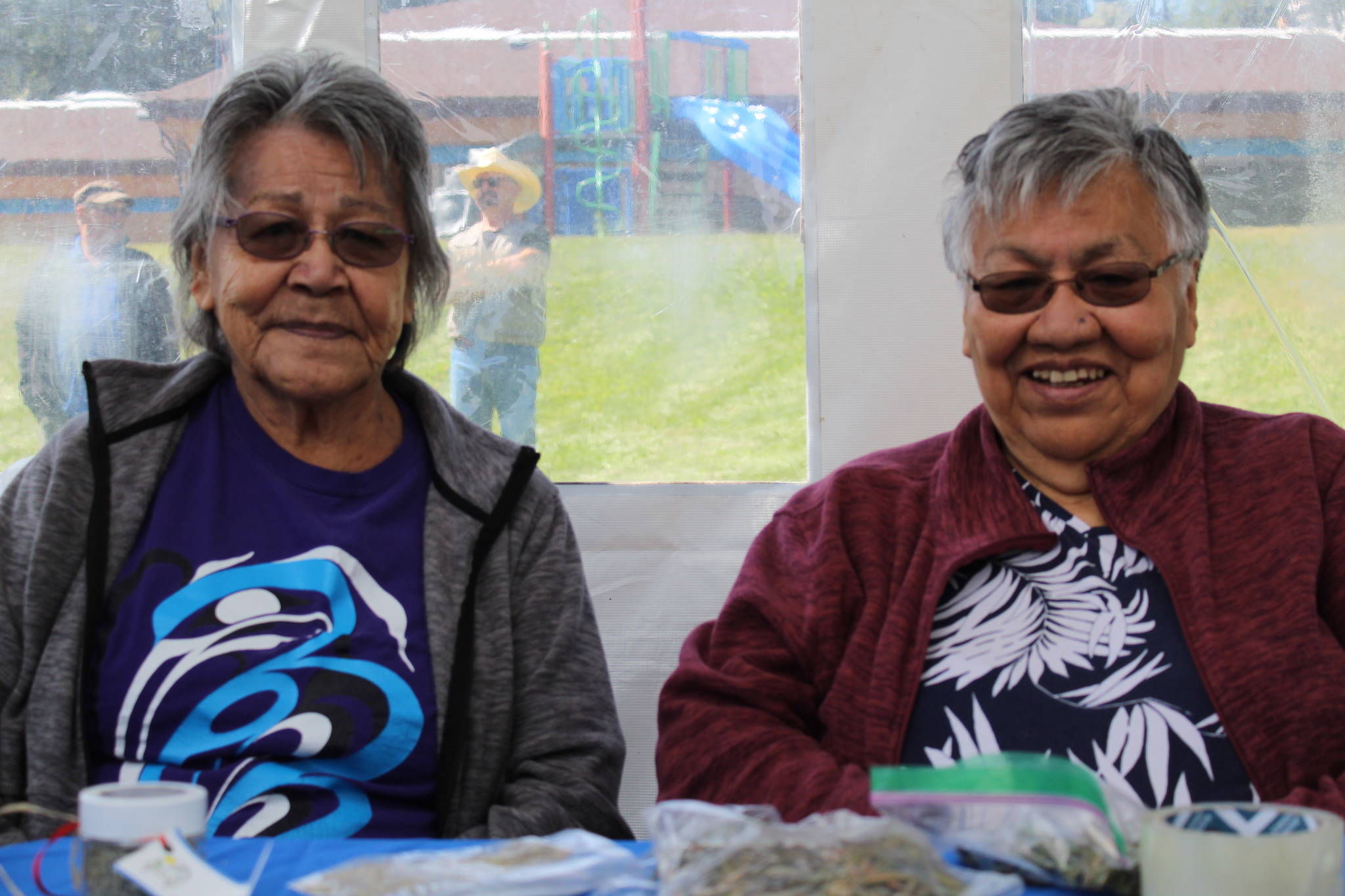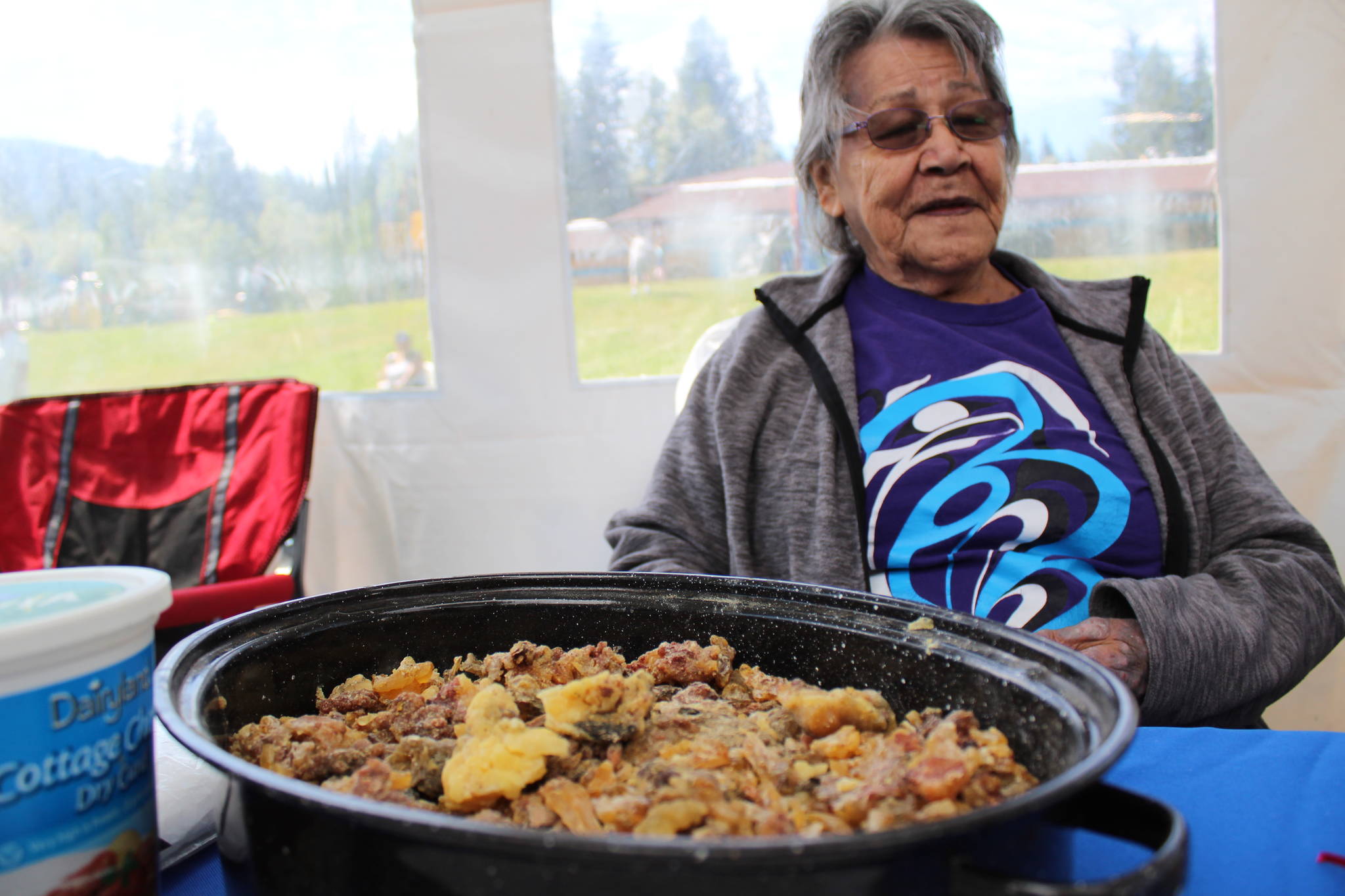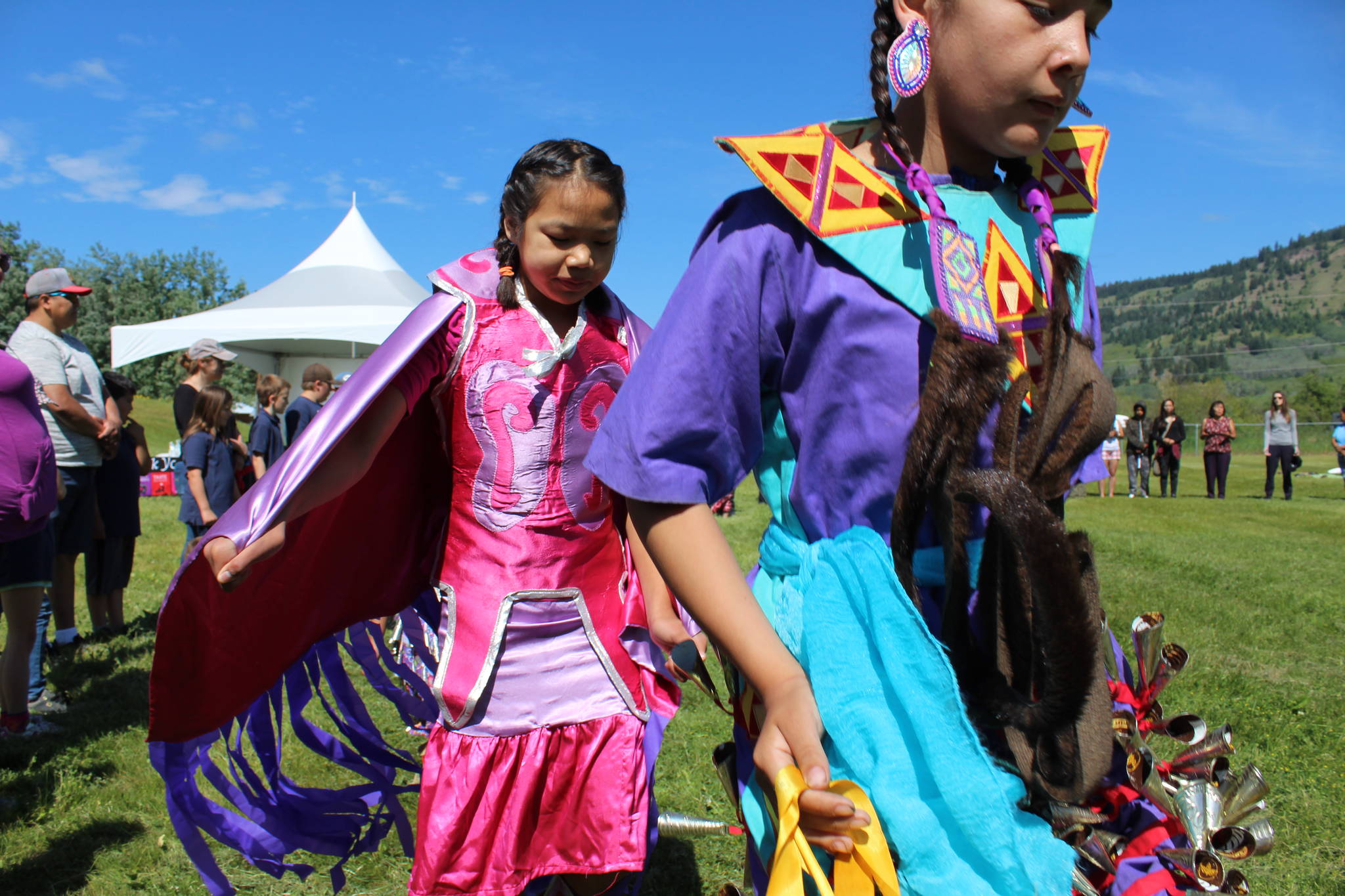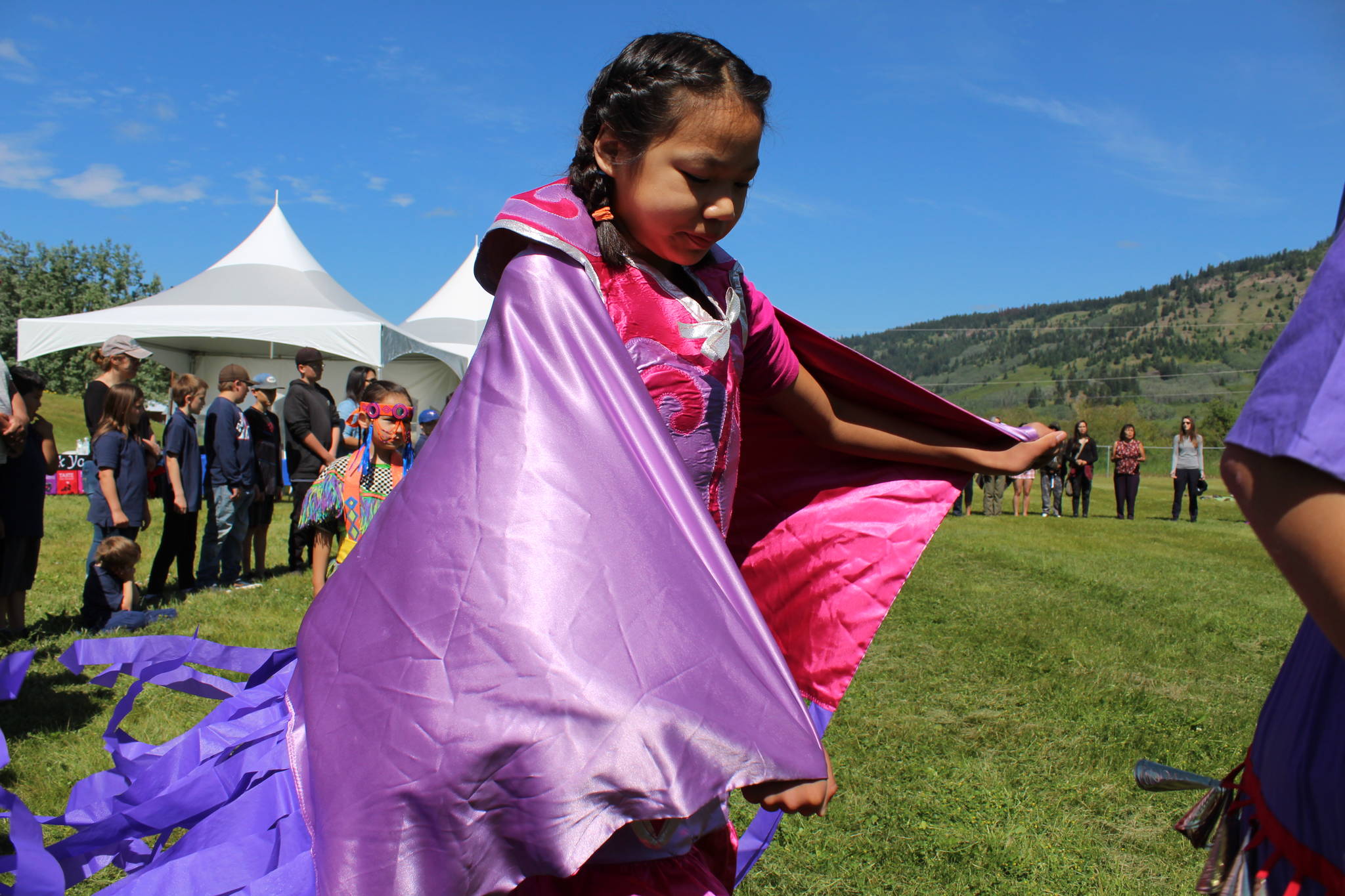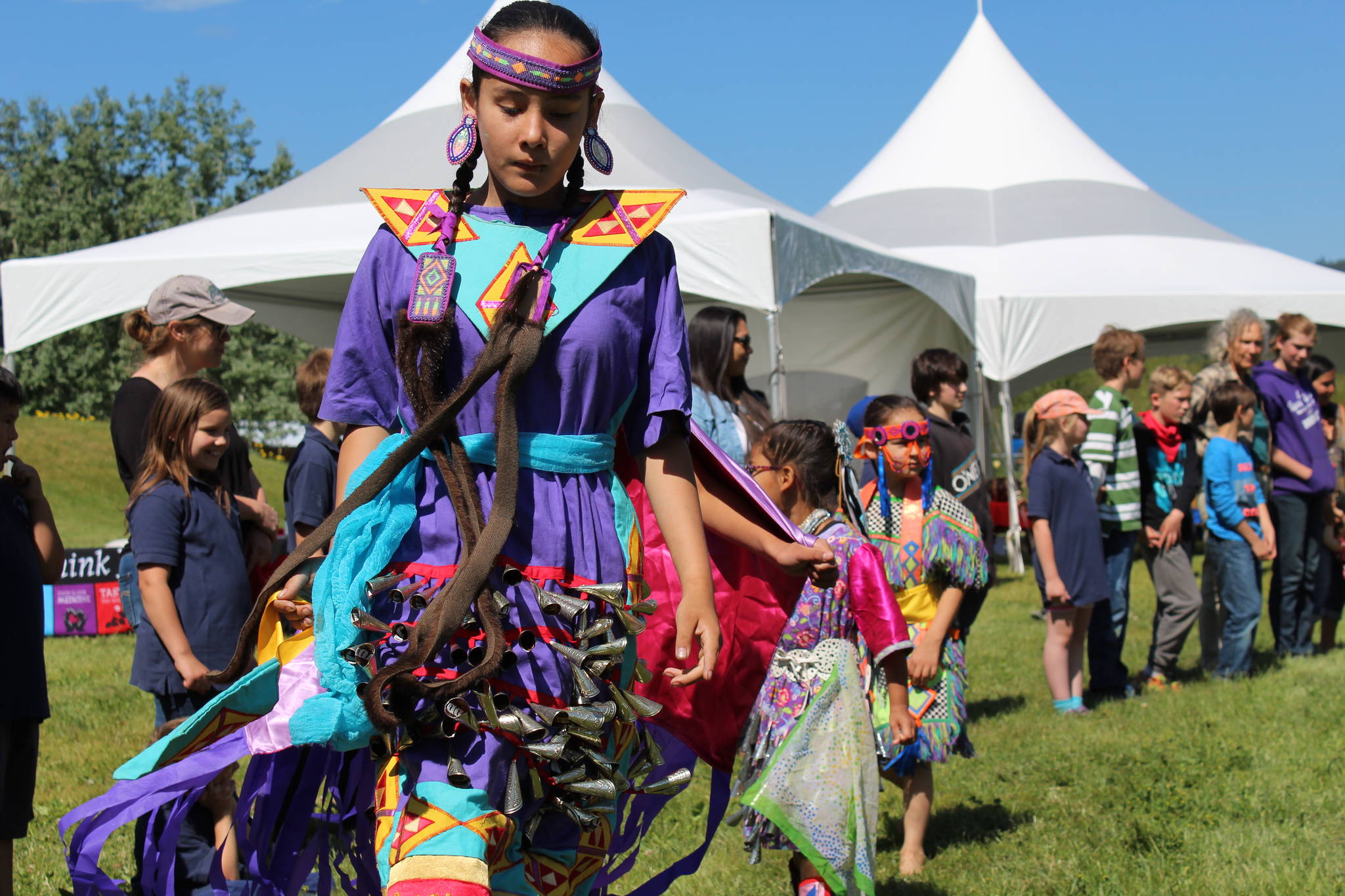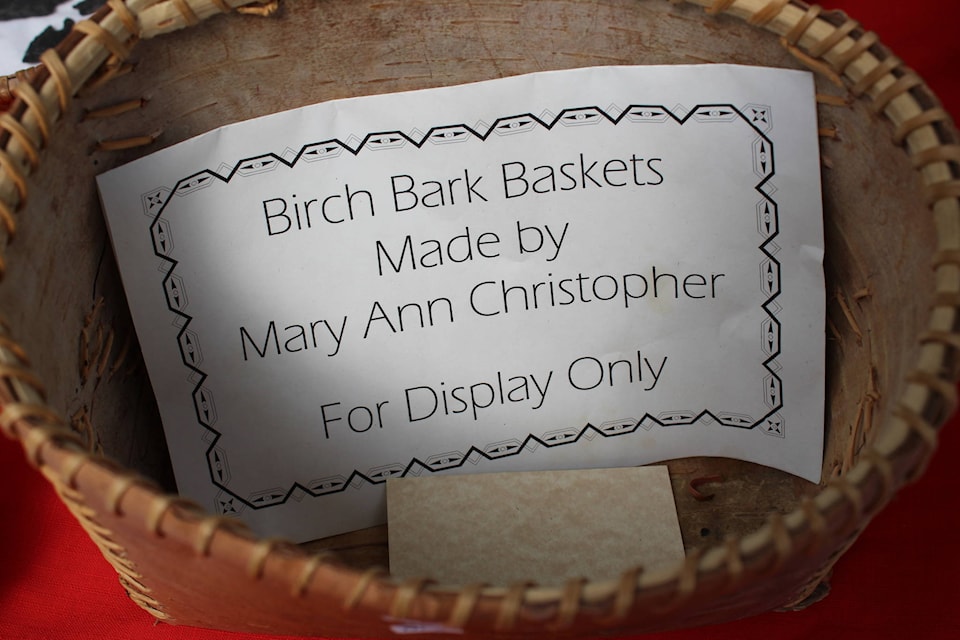Indigenous and non-Indigenous individuals joined together at Eliza Archie Memorial School to celebrate National Indigenous Peoples Day (NIPD) on June 21 with a full day of activities and learning opportunities.
Pam Theodore has been the coordinator for NIPD at Eliza Archie for many years. To her, the day allows individuals to join in play while learning about another’s culture.
“I think we have more awareness of why we’re celebrating,” said Theodore. “A lot of our people are so proud of our heritage. It’s a way to also teach our children.”
Theodore explained that many Canim Lake community members went to Williams Lake for the day, but those who stayed behind to celebrate NIPD at Eliza Archie were joined by the students of Forest Grove Elementary, who were invited to share the day with them.
In the field below the school, Theodore’s mother Elsie and aunt Antoinette Archie were stationed for the day. The Archie sisters are two elders in the community who continue to teach language to children around Canim Lake. Elsie is 76 while Antoinette is in her 80s. On NIPD, the Archie sisters featured an ethnobotany booth within the hexagon tent set up in the school field. The tent included cultural artifacts, personal photographs from the Archie family, and traditional medicines made by members of the Canim Lake band.
Antoinette shared the importance of her family’s history and culture there by explaining a bit about her grandparents, who were significant figures within the community and respected elders, as Antoinette and Elsie have become.
“That’s my grandfather,” Antoinette explained as she examined the likeness of the relation framed before her. “I had the best grandfather in the whole world: Tommy Archie. His wife Eliza Archie is named after our school.”
Antoinette, or “Tony” as most know her, says that their grandfather taught both sisters so much.
“The elders from years ago were teachers. It didn’t matter who you were. They would tell you what you’re doing, what things are, like medicines. One lady, her name was May Dickson, she used to gather the children to teach them our faith and tell stories.”
The Archie sisters explained that their grandmother Eliza was a similar brand of woman. She lived into her 90s, but after Tommy’s death in the 1950s, their grandmother was alone for years. In that time, she kept busy giving back to her community in more ways than one might be able to imagine.
Read more: South Cariboo celebrates National Indigenous Peoples Day
“She did many things for the reserve,” said Elsie, listing just a few of the reasons Eliza Archie Memorial School was named after her grandmother. “She walked around wherever she went. She went from one person’s house to the next and asked if she could do the mending or if there was anything she could do for them. If somebody was sick she would cook them some soup. She was just everywhere.”
Antoinette jumped in to fill in a few details for her sister, adding that their grandmother lived about five kilometres from the school but walked down into the community every day to pick berries or tell stories to the little ones.
“Whatever the person needed to be done, she would do it. She was very helpful and respectful and all of these things was our Kye7e. We say Kye7e for grandmother,” said Antoinette. She gestured to her sister beside her. “The kids all call us Kye7e. Now we are in the Kye7e’s footsteps.”
Tony and Elsie pointed over to a table in the centre of the hexagon tent, where a few hand-made baskets were displayed. The sisters explained that the baskets are cradles, called xqwint in their language. Their grandmother Eliza Archie used to make a unique Saskatoon bush xqwint for every baby born in the Canim Lake community.
“If she knew somebody was expecting, she’d be right there making the baskets,” said Tony. “She went up by herself on the hillside and made all those.”
Recalling the impact their elders made, the Archie sisters reflect on their own status in the community, as they carry forward the traditions passed down by their Kye7e.
“I don’t know if they’ll change it [the school] to ‘Elsie and Tony’ when we’re gone,” the sisters added with a laugh.
Just then, Jessie Archie arrived in the hexagon tent to present his elders with fresh balsam, which he made very carefully in a process similar to brewing tea, using tree bark.
Elsie explained the comparable process of making pitch medicine, which involves heating pitch in a can over low stove heat before adding a secret ingredient and eventually straining the product through cheesecloth. Tony noted that the pitch medicine is useful for boils, eczema, cuts, and sores.
“People used to chew that gum,” Tony said. “Pitch helps your teeth get strong and clean inside. We’ve always chewed that pitch gum, it was the only gum we had.”
“My dad had all his teeth when he died and he always used that,” Elsie confirmed.
The sisters share the belief that the children in their community need to learn the history and traditions of their culture. Together, they teach their language and medicine to local children.
Beyond the hexagon tent, another tent was set up in the field for the community’s elders to relax in at Eliza Archie. Elsewhere, children participated in sumo wrestling, an amazing race, and a bannock-making contest. There were also bouncy castles and a variety of other fun and physical activities for visitors and community members to enjoy at the school.
Volunteers from the provincial organization Indigenous Sport, Physical Activity, and Recreation Council (ISPARC) visited Canim Lake for NIPD. Robin Edgar was one of the ISPARC volunteers who stopped by the school to help out. She explained that ISPARC offers sport and coaching development in communities while also organizing elite sports for team B.C. On NIPD, ISPARC held a fundraiser for the youth who will travel to Halifax in 2020 to participate in the North American Indigenous Games.
The Healthy Living amazing race that took place on NIPD was also part of ISPARC. Edgar said that volunteers had actually been in the area for a few days and enjoyed getting out on the land and volunteering with the community. Edgar is a medicine woman and also ran a “re-think your drink” station during NIPD that featured stinging nettle tea and other herbal beverages.
For Edgar, June 21 signifies national recognition for her people.
“I don’t think we need the recognition, we always celebrate each other daily, but also the cross-cultural celebration. There’s another school here today, a non-Indigenous school, and I think it’s really great for them to come and see our culture.”
Eliza Archie Memorial School recently participated in the Warriors of Wellness competition, a healthy living challenge that ISPARC runs provincially. Out of 12 participating schools across B.C. Eliza Archie won, receiving a $1,000 grant for their achievement.
Related VIDEO: National Indigenous Peoples Day celebration
Victoria Frank attended NIPD to sing the welcome song with her family. She also led everyone in a Friendship Dance that connected indigenous and non-indigenous individuals through a circle of joined hands and shared experience. Frank was once a 100 Mile Princess and travelled to Europe in the early 2000s as part of her title. She now volunteers at the school and helps students make hand drums and dream-catchers.
“I’ll do anything for our warriors,” she said. For her, NIPD means having a day to represent and be “proud of who we are.”
Lenora Christopher and her brother William Frank accompanied Victoria for the welcome song. Christopher explained that Victoria is her niece and that the Frank family often performs together.
“She’s a carrier of the songs and the heartbeat”, Christopher said of her niece, Victoria. “Same with my brother.” Her brother William often visits the school to teach about smudging and drumming.
For Christopher, NIPD means “gathering and understanding our traditions and culture.”
As a small girl flitted into view at Christopher’s hip, she introduced her granddaughter, Bluebird Dick, pointing out the girl’s detailed performance regalia.
“This one here is a jingle dress and it represents the rain,” said Christopher. “All of these dances are pretty much from the east, they are borrowed, and when they [the girls] dance they have to respect what they wear.”
Frank added that there are different styles of dancing within the culture for each gender.
Amy Truran, age 11 and Infinity Bob, age 12, were both Canim Lake dancers who performed during NIPD. Bob has been dancing for a year and says her favourite part is getting to do all the moves.
“I’m wearing a fancy [dance] cape, but it keeps on falling off,” Bob explained. She pointed out her matching moccasins and pink skirt, adding that an elder had made the dress for her.
Finally, she pointed to the figure emblazoned over her chest before twirling off to resume her dancing: “This is a butterfly.”
raven.nyman@100milefreepress.net
Like us on Facebook and follow us on Twitter.
